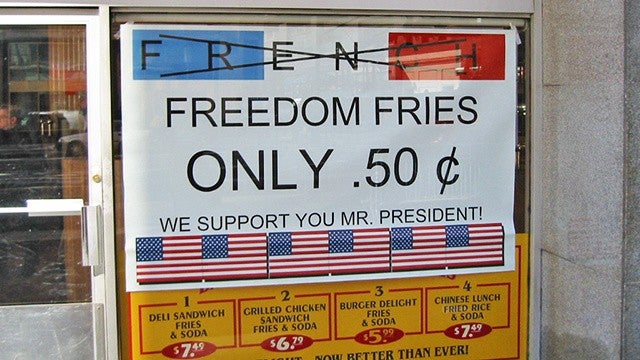In 2011, Libyans took arms against the 40-plus year rule of Muammar Gaddafi. The dictator tried to brutally crush a demonstration against his regime in Benghazi. The response from the Libyan people was a nearly nine-month-long civil war which ended with the death of the dictator near his hometown of Sirte. But it was a victory that almost never was. The Libyan Rebels needed to level the playing field when it came to air superiority – they needed to be able to call in airstrikes.
That’s where Twitter came in.

Some people swear by it.
By mid-March 2011, Gaddafi’s loyalist forces were pushing the rebels back fast. All their hard-won gains liberated more than half of Libya from the dictator who promised to make the streets of Benghazi run red with rebel blood. Gaddafi’s air power was proving to be a decisive advantage in the civil war. Luckily for the rebels, there was a NATO task force assembling offshore.
American, French, British, and Canadian ships had all joined each other off the Libyan coast and began to hit Gaddafi’s positions with the full might of their respective sea-based air forces. They also began to enforce a no-fly zone. This was enough to turn the tide of the rebels, who were battle-hardened veterans, fighting for their lives. It was a strategic win for them, no doubt, but the tactical use of NATO air power proved problematic.

“I can just call a jet fighter and one will come kill these tanks? This must be what being a U.S. soldier is like.”
Many wondered how NATO fighters could know where to drop tactical missiles and bombs when their own JTACs are not on the ground with rebel forces, and NATO has no direct communications with the fighters it’s supporting. The answer is that the Twitter social media network became part of NATO’s overall “intelligence picture.” NATO allies began analyzing data gleaned from Twitter posts to understand Gaddafi’s movements but also to assist rebel fighters in pushing down pro-Gaddafi attacks.
Rebel fighters using their cell phones would gather coordinates from Google Earth and then tweet those coordinates to NATO, who would then come in and light up the loyalist forces. The top NATO brass says it’s a normal step any military would take.
That’s how Gaddafi would meet his end, and where his death would be posted for the world to see.

“Yes, right up his butt. It’s on YouTube.”
“Any military campaign relies on something that we call ‘fused information’,” said Wing Commander Mike Bracken, a NATO spokesman. “We will take information from every source we can… The commander will assess what he can use, what he can trust, and the experience of the operators, the intelligence officers, and the trained military personnel and civilian support staff will give him those options. And he will decide if that’s good information.”
Since NATO had no boots on the ground but deems it vital to support the Libyan rebels, extrapolating the information needed by commanders seems like a totally legitimate means of intelligence gathering – and an effective one to boot. NATO airplanes decimated Libyan air defenses and made the critical difference in the war for the Libyan people to liberate themselves from a terrible dictator.
And then tweet about it.


























